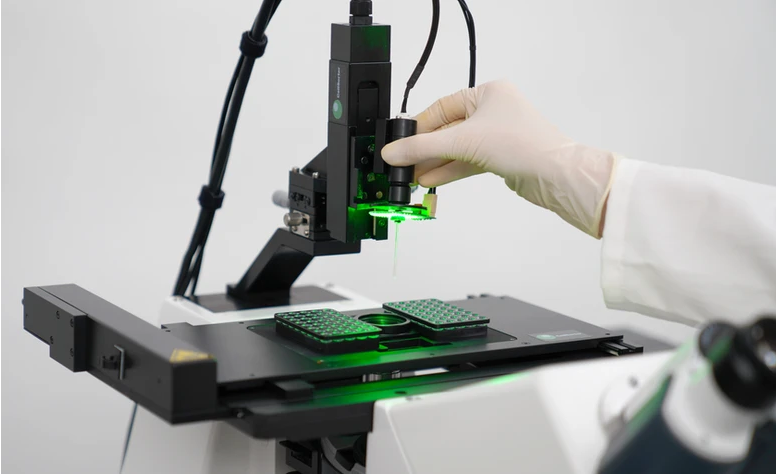Users connect the Piezo Head Device to their inverted microscope.
Viable cells
After sorting, one viable cell is delivered to each PCR tube.
User-friendly
Fully automated with a user-friendly interface.
High-speed imaging
Typical scanning speeds range from 100 to 1,000 cells per second, with cell picking speeds ranging from 3 to 4 single cells per minute. The sorting speed while collecting many cells is one cell per second.
High-quality imaging
Computer vision recognizes both unlabeled and fluorescent cells. Sort cells that have been tagged with fluorescent probes or markers.
Highly modular
There are several alternatives for a more personalized experience and a better fit.
Unprecedented precision
Superior liquid handling precision: 0.1 nanoliter, with a single cell isolation efficiency of >90%.
Software included
Cellsorter offers user-friendly software with an easy UI and free software upgrades for all instruments.
Modular options
- Microscope–Practically any inverted microscope is possible. The top picks are Zeiss, Nikon, or Olympus
- Camera–Including Andor, PCO, Flir, Hamamatsu, and more
- Motorized stage–Several options are available, including the Prior and Märzhäuser stages, depending on the sample size and scanning speed
- Light source– Prior Lumen 200s for standard use and Lumencor Spectra is recommended
- Objective lens–Standard equipment includes a 10×lens. However, higher magnifications are also available.
- Levels of motorization–The objective changer (nosepiece) and motorized filter turret are options
- Sample Holder–Microscope slides, chamber slides, standard multi-well plates (96 well plate), and 35 mm Petri dish
- Container for Single Cell Deposition–PCR tubes/strips, PCR plates, Multi-well plates
- Brightfield or phase contrast illumination: Standard transmitted light source of the microscope

Image Credit: CELLSORTER Biotechnology Innovations

Image Credit: CELLSORTER Biotechnology Innovations